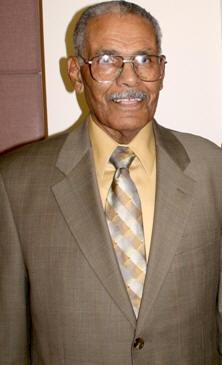 |
|
|
|
|
|
|||
|
By |
||||
 |
March 17, 2010 -
The last remaining survivor of the historic all-African American Pea
He continued to
serve as a mess attendant in subsequent assignments until he was
assigned to the all-African American Pea Island life saving station
where he served as a surfman for the duration of World War II.
This historic
chapter in his career closed as Collins locked the doors of the Pea
Island Station in 1947 as part of the last Coast Guard crew to staff
this historic unit. |
|||
|
He earned his Warrant Officer appointment in 1959 and becoming a Chief
Warrant Officer 4 in 1968. In 1969 he received a commission and was
promoted to the rank of Lieutenant while stationed at Coast Guard
Headquarters. He went on to assignments at "I had the extraordinary personal honor to spend time with Herb Collins and his family not long ago and his love for our service was deep and enduring. Lieutenant Collins service to the Coast Guard and our nation is significant, especially in light of the challenges that African Americans faced as the service was integrated,” said Adm. Thad Allen, Coast Guard Commandant. "Today we mourn the loss of a legendary shipmate and at the same time celebrate his legacy of excellence and tenacity.” |
||||
|
Historical Remarks: The original site of the Pea Island Station was acquired by deed dated 25 July 1878 under provisions of the Act of Congress, approved 3 March 1875 and covered a tract of land containing 3 acres. In 1896, by deed of 7 December that year, a new site was acquired and the old site was "abandoned and reverted to the grantors." On 25 September 1908, additional land and right of way adjoining the station property was acquired from E. M. Midgett, et. al.
Captain Richard
Etheridge became the first African-American to command a Life-Saving
station when the Service appointed him as the keeper of the Pea Island
Life-Saving Station in
Determined to
execute his duties with expert commitment, Etheridge supervised the
construction of a new station on the original site. He also developed
rigorous lifesaving drills that enabled his crew to tackle all
lifesaving tasks. His station earned the reputation of "one of the
tautest on the
On 11 October
1896, Etheridge's rigorous training drills proved to be invaluable. The
three-masted schooner, the E.S. Newman, was caught in a terrifying
storm. En route from But the alert eyes of surfman Theodore Meekins saw the first distress flare and he immediately notified Etheridge. Etheridge gathered his crew and launched the surfboat. Battling the strong tide and sweeping currents, the dedicated lifesavers struggled to make their way to a point opposite the schooner, only to find there was no dry land.
The daring,
quick-witted Etheridge tied two of his strongest surfmen together and
connected them to shore by a long line. T hey fought their way through
the roaring breakers and finally reached the schooner.
The seemingly inexhaustible By deed dated 11 June 1930 a new site containing 10 acres and more conveniently located, was acquired from the trustees of the Pea Island Club. The consideration for this conveyance was the formal abandonment of all the property on the island which had been used for lifesaving or Coast Guard purposes up to that time. Declarations of Abandonment of the site acquired in 1896 and the site and easement acquired in 1908, were executed and recorded. The station was "disestablished" on 18 March 1947. A board of survey noted that the dimensions of the property were approximately 200 feet by 2,400 feet and that the land was owned by the U.S. Biological Survey and had been used by the Coast Guard under a "use and occupancy permit". In 1949 the Pea Island Station was turned over to the Fish and Wildlife Service, Department of the Interior, for use in connection with the Pea Island Migratory Waterfowl Refuge. The station's boathouse was removed in 1948 by contractor "Ferrebee" and moved to Oregon Inlet Lifeboat Station for use as a garage and repair shop. The Board of Survey recommended that the lookout tower be left in place and retained in service "to house present Coast Guard telephone Communication system outlet and to serve as occassions [sic] demand as shelter for use by Stations performing assistance work in this area." |
| ©AvStop
Online Magazine
Contact
Us
Return To News
|
|
